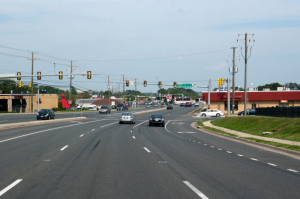Over at the Harvard Business Review, Umair Haque has written about “titanic institutional failure” — how institutions not only fail to provide value but actively extract it from us, extractive institutions. (His article is “The Economic Roots of Your Life Crisis”).
And it got me thinking about the idea of extractive design. Although we might not know exactly what it means, I bet we all know this kind of design when we see it–structures, places and objects that close down or take away our human potential, that deter engagement or interaction, that sap our emotional and physical energy rather than catalyze it.
Here are some examples:

optimization for cars

sidewalk to nowhere

suburban housing. Photo Copyright 2007-2011 by Mark Zoetrope (MarkZoetrope.com), all rights reserved.

The road to big box retail. Photo Will Weaver, 2010
looking at these pictures makes one wonder if cars are the greatest extractive mechanisms of the current system. Ah, but that would be far too simple…
On the one hand, extractive design might be seen simply as the physical manifestations of our capitalist system. In this view designers have very little influence. On the other hand, the concept of extractive design perhaps provides a strong counterpoint to design activism. Surely one of the core tasks that cuts across much design activism is the tackling of extractive design, the process of using design to “give” rather than to “take”?